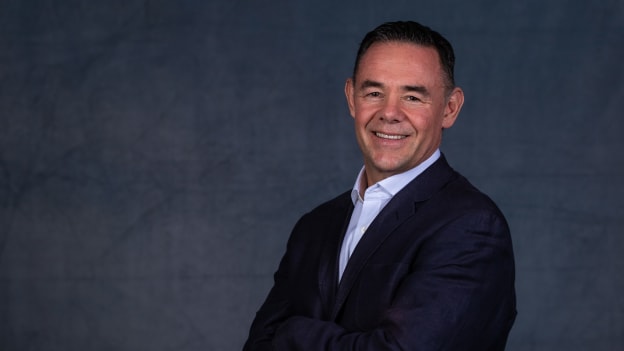The shift to internal mobility and building talent

It's always been important for organizations to be agile and respond quickly and appropriately to crisis. But up until COVID-19, that agility and responsiveness was not manifesting as much in the world of work. Now, however, organizations are rapidly catching up with the idea of making their workforce as responsive as their business strategy.
People Matters asked Neil Jones,Regional Managing Director, APAC at recruitment firm AMS, what he has observed businesses doing to stay flexible in hiring and workforce development lately. Here's what he shared.
What do you see organizations doing these days to cope with the changes in the world of work?
In the last couple of years, we've seen a fundamental shift in how work is done and how roles are filled. Five years ago, the discussion with HR directors was all about how to find talent. Today, it's much more about how to build and upskill talent; how to structure your workforce; how to manage the replacement of certain jobs with technology and automation. We call this workforce dexterity.
At the moment, I think it's fair to say most organizations are either at a strategy or early execution stage as far as the vision of workforce dexterity goes. Some more old-fashioned organizations may be stuck in first gear without a strategy, while some of the more dynamic new technology companies have moved straight to third gear because it's the only way they will find the talent they need.
But almost every HR director we speak to has a list of objectives in mind. Some organizations are improving their policies and strategies around upskilling, some are working on internal mobility and moving talent around, others are doing a really good job of looking at how they can use flexible contracts to supplement the workforce. They might not be ticking every box, but their projects and initiatives are moving them in the right direction.
Are certain initiatives emerging as more popular, or more effective?
Yes, there is a move towards upskilling and building your own workforce rather than hiring new talent, and aligned to that, we see internal mobility. I think this is being driven by a combination of skill shortages and the tightening of legislation in many countries to put local talent first for jobs.
Consider digital skills, which have been so hard to come by during the pandemic, and even if you hire for a functional technical skill set, within 18 months the technology is obsolete. So we see a heavy focus on developing the skills in their workforce. Organizations are moving towards having advanced inter-operability programs—some Fortune 500 companies are investing in tools to manage their skills databases and introducing project-based initiatives so that you might see 20 percent of someone's work being on projects outside of their own field.
What about the move towards contract hiring: is that also becoming widespread?
If you look at past crises, such as the SARS crisis in 2003 or the global financial crisis in 2009, or even the dot.com bubble, there is a swing in the mix of permanent and contract talent during an economic downturn, because uncertainties are there and organizations can't plan so well for the future. So what's coming out of the pandemic is a natural shift to a different balance where contracts become more popular, because of the uncertainty and the difficulty in workforce planning.
We're seeing a long term structural trend towards a workforce with a much higher proportion of flexible contracts.
Indeed, if you look at countries like the UK or the US, the contract-permanent mixes are as extreme as 50/50 now. And that's been driven by volatility, but also by demographics. Millennials and younger groups don't want a job for life. There are statistics showing that for millennials today, two years in a job is considered becoming stale.
How is this affecting the way organizations hire—are they moving more towards hiring for potential compared to experience or other qualifications?
I think the one thing the pandemic has absolutely done is accelerated the concept of hiring for potential rather than skillset. There's been a massive improvement in this area. Pre-pandemic, we had a continuous dialogue with HR around not focusing on the technical functional skills for the industry, but instead focusing on the growth mindset, the learning capability, and the intellectual and emotional capacity of the individual in front of you. Two years ago, that was probably lip service; a year ago we were seeing initiatives moving towards it.
In line with that, we are seeing a real appetite for diversity programs within recruitment. For example, diversity within emerging talent—it's no longer about just going to the best university, organizations are now going to a much more diverse range of places to find talent. We're also seeing it from a demographic viewpoint: people in their second or third career. And we are seeing it specifically with gender diversity, which is really prevalent in Asia. There's a massive focus in a lot of countries on gender diversity in the technology and digital fields, because if you look back two or three years ago, only 3-5 percent of the talent profiles would be female. But now, most organizations are proactively setting gender balance targets.
Does this also extend to the way organizations assess their new hires for, say, the first six months or one year?
We're increasingly seeing organizations measuring more data on indicators such as performance and attrition rates for new hires, and HR functions are taking more sophisticated approaches towards career pathways for the first few years.
A lot of thought is going into developing high potential hires, for example putting them on projects where they can be exposed, stretch their abilities, and learn from the best performers in the organization.
And of course the individuals themselves want to progress more quickly through the organization, and won't tolerate the old-school bureaucratic approach.
Overall, what challenges are you observing in attracting and retaining high potential candidates today? How can organizations more effectively meet their workforce objectives?
The challenge is to build the employee value proposition (EVP) for a diverse market. Different demographics, for example, have very different views. What motivates a 52-year-old is massively different from what motivates a 25-year-old. Millennials are far more passionate about societal good and have a much greater collective social conscience than their older counterparts. Then there is the pandemic, with so much uncertainty that people are less willing to leave their existing jobs, and the lack of contact. It's no longer unusual to hear that people have started a new job and still not physically met any of their colleagues six months later. Which means that organizations have to be really thoughtful around the onboarding experience and how to get people equipped with their tools and up and running.
So, organizations have to do a lot of work to make sure that the EVP is well thought out, well communicated, and in touch with the demographic that it's targeting.
One important thing to understand is that the employee value proposition needs to reflect the image of the organization in the market.
When it is well done, the brand equity can be very fulfilling. But where the EVP doesn't resonate with the general public view of that organization, it can be very challenging.














